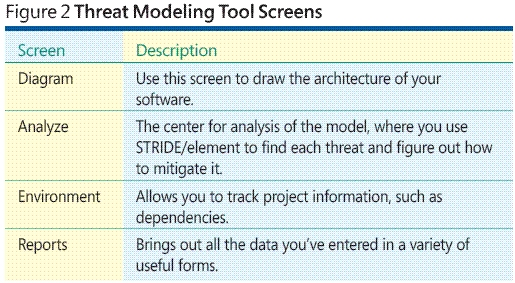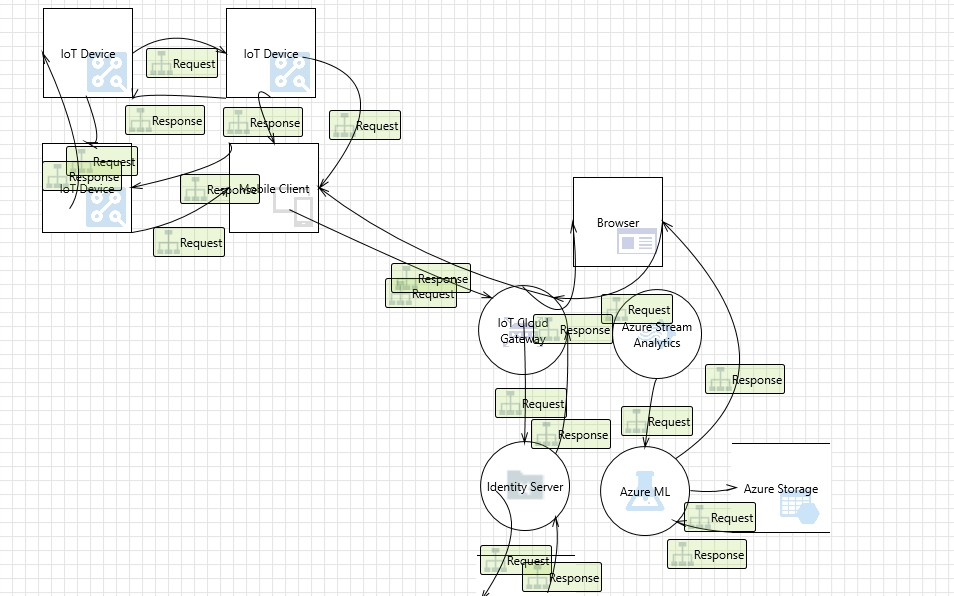

When a user accesses a Web page through a browser, class files for an applet are downloaded automatically, even from untrusted sources. A sandbox is a security scheme that prevents Java applets from accessing unauthorized areas on a user's computer. Java applets use sandboxes to enforce security. The ActiveX trust certificate also states the source of the plug-in signatures of the ActiveX modules. The primary difference between Java applets and ActiveX controls is that the ActiveX controls are downloaded subject to acceptance by a user.
#MS SDL THREAT MODELING TOOL DOWNLOAD#
ActiveX refers to a set of controls that users can download in the form of a plug-in to enhance a feature of an application. A hierarchical database is used where one to many relationships exist.Īuthenticode is used by the ActiveX technology of Microsoft to enforce security. A hierarchical database tree structure can have branches and leaves where leaves are the data fields and the data is accessed through well-defined access paths by using record groups that act as branches. Records and fields are related to each other in a parent-child tree structure. In a hierarchical database, the data is organized in a logical tree structure rather than by using rows and columns. An object-relational database allows developers to integrate the database with their own custom data types and methods. This database model provides scalability features, such as load balancing and fault tolerance.Ī object-relational database is a hybrid between an object-oriented based database and a relational database, and inherits properties from both. The distributed database model allows different databases situated at remote locations to be managed individually by different database administrators. The logically connected databases appear as a single database to the users. In a distributed database model, databases are logically connected to each other to ensure that the transition from one database to another is transparent to the users. The distributed database model implies multiple databases that are situated at remote locations and are logically connected. The object-oriented model provides ease of reusing code, analyses, and reduced maintenance.

In an object-oriented database, the objects can be dynamically created according to the requirements and the instructions executed. These objects are used to create dynamic data components.

The data elements and the different components are referred to as objects. An object-oriented database is used to store multiple types of data, such as images, audio, video, and documents.


 0 kommentar(er)
0 kommentar(er)
